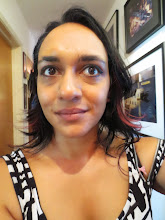I have been thinking a lot about last month’s College Art
Association conference, where I attended a panel on the future of art magazines in which the
concept of International Art English came up for debate. The Triple Canopy essay that coined the term, published last July, has been discussed in detail elsewhere, but after reading this recap of the CAA panel moderated by Art in America editor Lindsay
Pollock, I have been thinking about the argument Triple Canopy editor Peter Russo and e-flux co-founder Anton Vidokle
got into about the fairness of the article’s reliance on e-flux
announcements as source material. Vidokle claimed that the study emphasized a
community of non-native English speakers as indicative of a certain superficial
approach to art language, and whether in turn that emphasis was misplaced and thereby,
as he put it, a “typical colonial argument.” His domineering manner aside (he
interrupted Russo and TC editor Alexander Provan repeatedly when they disagreed
with him), something left me uneasy with respect to Vidokle’s statement.
While he seemed to claim that Triple Canopy’s article
unfairly attacked e-flux, I see the essay less as an attack and more as a
quantification of a heretofore invisible system of insider communication. The
international art community whose publications e-flux circulates may be, as
Vidokle suggested, largely English learners who rely on jargon to communicate
in a language they have not mastered. There are certainly colonial structures
at play here, determining who creates this language as well as who consumes it.
But an article like this one that studies such systems is not the problem
here. Rather, it indicates that within a certain size of museum anywhere in the
world -- that which has the budget to afford the (not insignificant) cost of
e-flux’s service -- employees are under pressure to speak to an international
art audience to the exclusion of people in their own communities.
This represents a colonial system at work in the arts, not
because communication is ostensibly in English, but because the institutions
that have the financial means to present international art and support
ambitious projects are disinvested in their own communities as both audiences
and creative artists, and seem to be speaking above the public to a small
community of insiders. As such, the
predominance of International Art English in e-flux announcements is of greater
concern than its appearance in Artforum or another publication where
participation is not tied to both a set fee and non-profit status. If private
collectors, artists, and other insiders want to speak their own language, so be
it. When non-profit institutions in the public trust have ceased to communicate in language
that their public constituencies can understand or access, that is cause for alarm.

